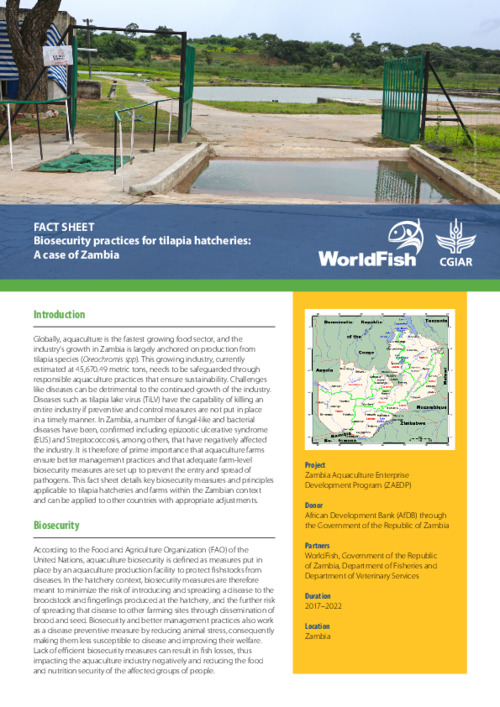Biosecurity practices for tilapia hatcheries: A case of Zambia

Globally, aquaculture is the fastest growing food sector, and the industry’s growth in Zambia is largely anchored on production from tilapia species (Oreochromis spp). This growing industry, currently estimated at 45,670.49 metric tons, needs to be safeguarded through responsible aquaculture practices that ensure sustainability. Challenges like diseases can be detrimental to the continued growth of the industry.
Diseases such as tilapia lake virus (TiLV) have the capability of killing an entire industry if preventive and control measures are not put in place in a timely manner. In Zambia, a number of fungal-like and bacterial
diseases have been, confirmed including epizootic ulcerative syndrome (EUS) and Streptococcosis, among others, that have negatively affected the industry. It is therefore of prime importance that aquaculture farms
ensure better management practices and that adequate farm-level biosecurity measures are set up to prevent the entry and spread of pathogens. This fact sheet details key biosecurity measures and principles
applicable to tilapia hatcheries and farms within the Zambian context and can be applied to other countries with appropriate adjustments.
Permalink
Date Available
Type
Publisher
Countries
Copyright
CC-BY-NC-4.0
Research Themes
Topics
Language